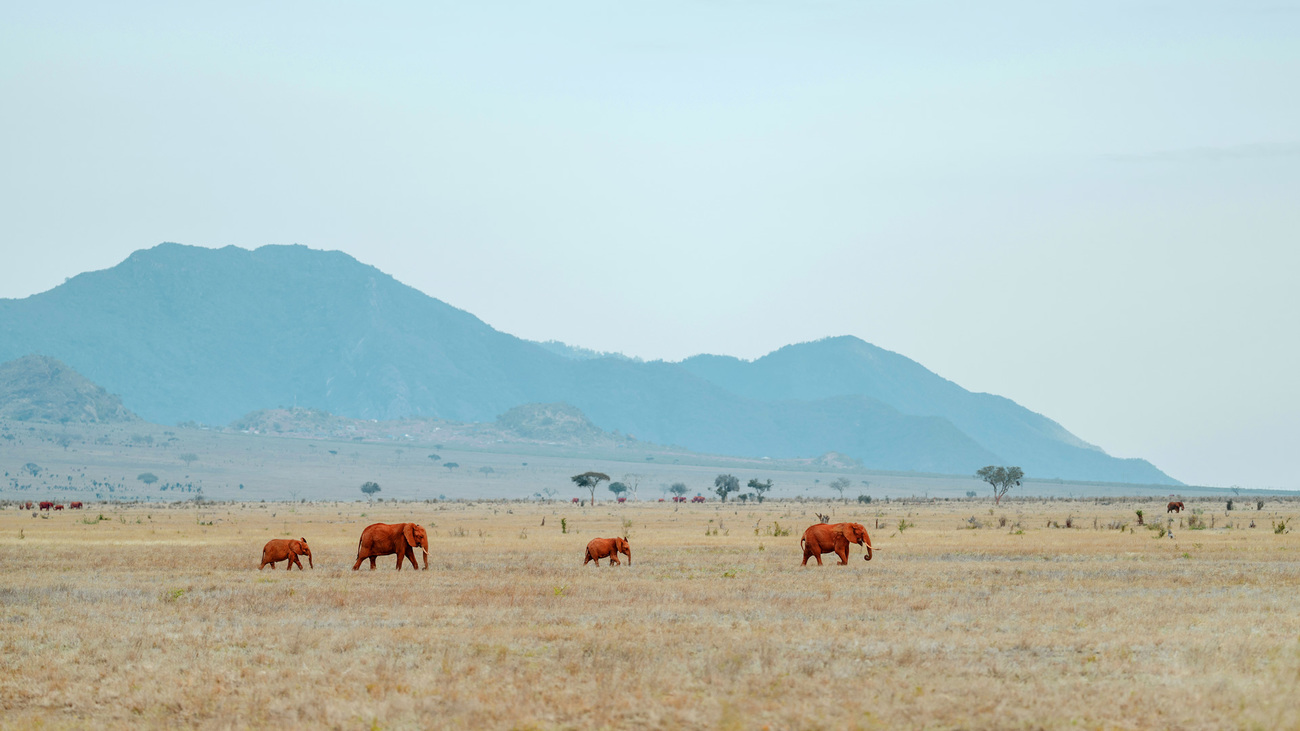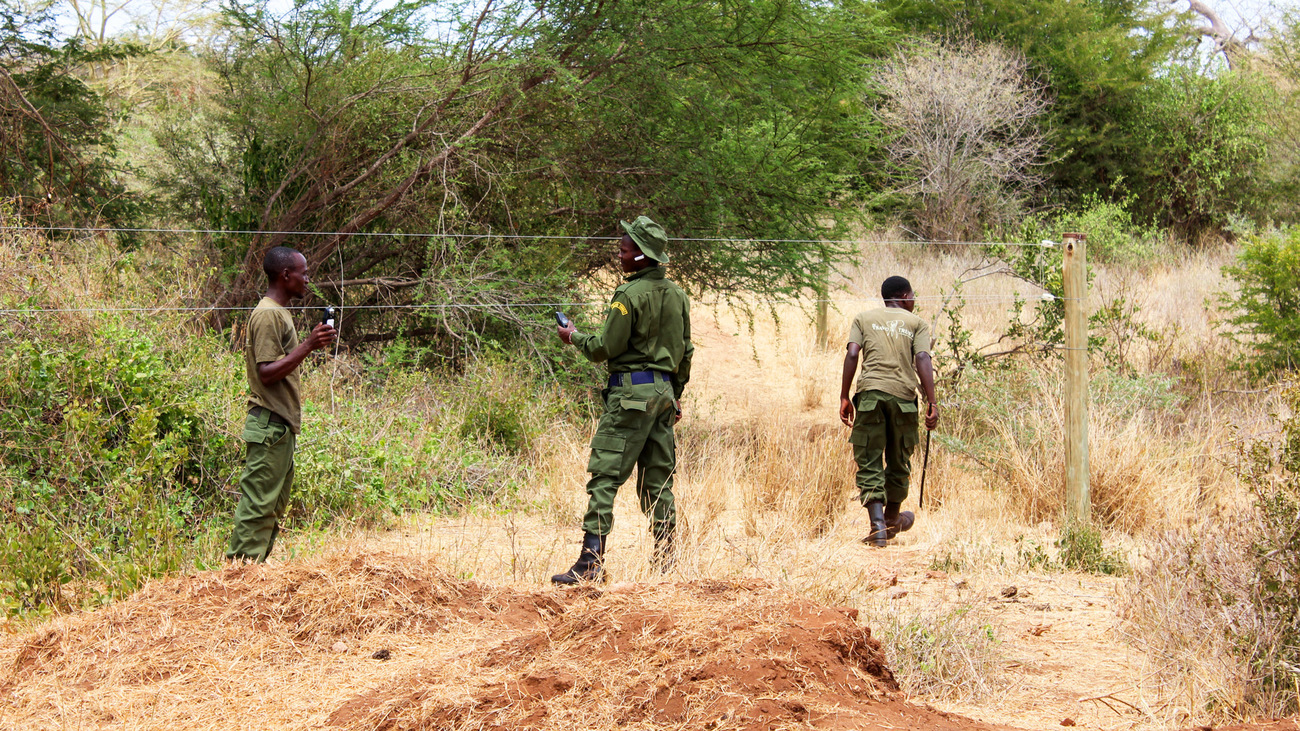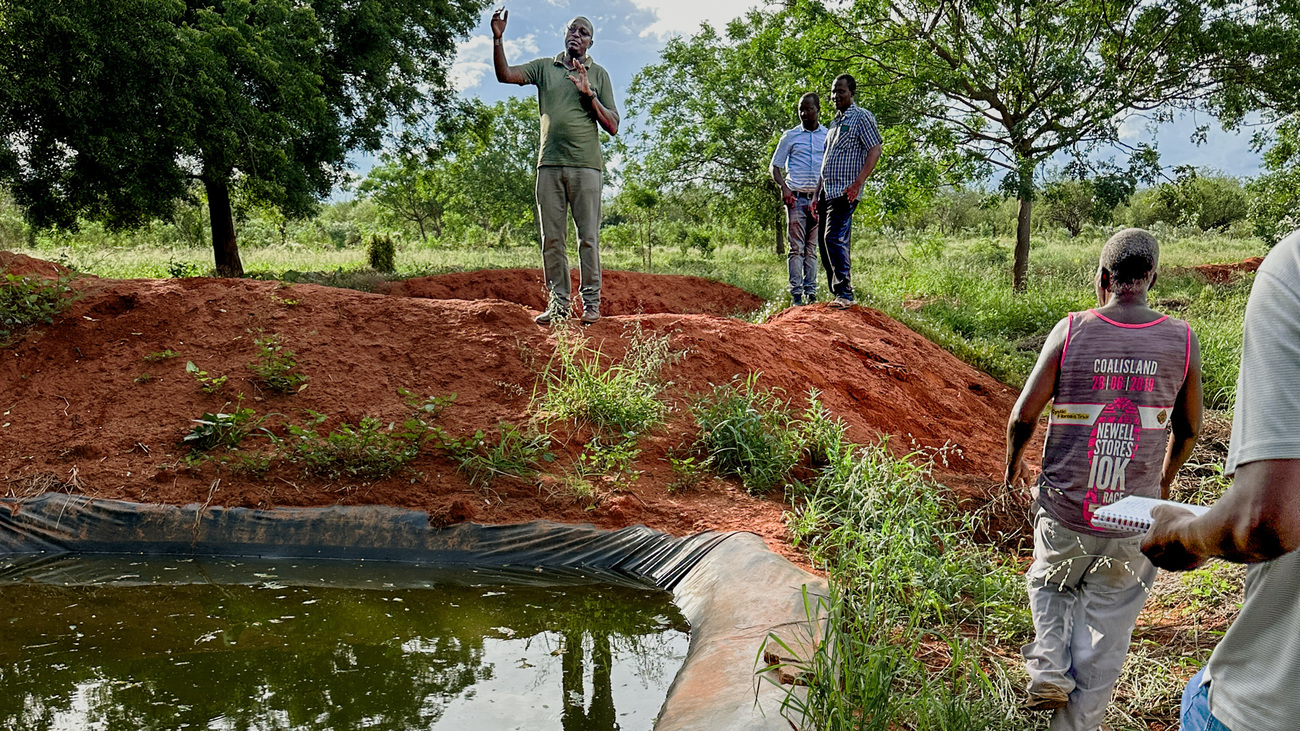Victor Murunga
Human-elephant conflicts down nearly 90% in Tsavo community thanks to fencing
Human-elephant conflicts down nearly 90% in Tsavo community thanks to fencing
A USAID and IFAW-led project implemented by Tsavo Trust has drastically reduced human-elephant conflicts on the border of Tsavo West National Park in Kenya by nearly 90%, bringing relief and hope to 7,000 food-insecure and marginalised small-scale farmers and restoring the landscape. At the heart of the project is a massive solar-powered elephant exclusion fence.

‘In 2021, game scouts drove 1,693 elephants from community areas in Kamungi Wildlife Conservancy,’ says Tsavo Trust chief community officer, Nicholas Njogu. ‘But when Tsavo Trust erected a 33-kilometre elephant-proof fence between Mtito Andei River and Kamunyu village, the numbers fell to only 193 elephants drives in 2023—an incredible 88.6% reduction in human-elephant conflict.’ The USAID-IFAW project pays three technicians and covers fence maintenance costs.
The Kamungi community comprises 385 households who dedicated 6,880 acres of their land to form a wildlife conservancy as a vital buffer to the northern boundary of Tsavo West National Park. They reside within a 202-square kilometre (78-square mile) national game reserve, an area early settlers named Ngai Ndethya—’God help me’—underlining the scarcity of water and the risk of wildlife attacks in the bleak, semi-arid landscape.
’This place was a notorious poacher’s route, so elephants learned to avoid it and would only come as far as the river. But, when we formed the conservancy and kept poachers out, the elephants started trooping back,’ says Stephen Kisonde, a 69-year-old woodcarver who settled in the reserve in 1983.
When farmers and elephants share a space, conflict is almost always inevitable. Other than physical attacks, which in turn invited retaliatory killings from the community, the animals destroyed crops, heightening poverty and food insecurity in an environment where dry seasons stretch for as long as seven months and have been getting progressively more severe due to climate change.
A simple solution with life-changing results
The elephant exclusion fence along the Mtito Andei River on the border of Kamungi Conservancy and Tsavo West National Park is bringing relief and hope to this impoverished, water-deprived landscape and the wildlife and people who depend on it. While the two-strand fence—installed at a height of 2 meters—is an effective deterrent against elephant intrusion, it is designed to allow humans, livestock, and smaller mammals to walk through. This, says Njogu, enables the community to cultivate crops, herd livestock, and go about their daily lives without fear of attacks or property damage from elephants.

’We barely slept before this fence was constructed,’ says conservancy senior game ranger John Khan. ‘You could be peeling off your boots after a patrol only to hear a distress call crackle on the radio. Elephants would block roads when children were going to school and invade farms at night… we were always on the move. But today, a month can go by without us responding to an elephant incident.’
The benefits of co-existence
Stephen Kisonde, who previously eked a living from selling woodcarvings and traditional beehives, is one of the beneficiaries of this new-found peaceful co-existence with wildlife. With elephants at bay, he now has a tree nursery and dabbles in horticulture and mixed farming after training in climate-smart agriculture. With 39 other farmers, he was trained in certified drought-resistant seeds, crop diversification, soil conservation, water management, and organic fertilisers. A wooden granary constructed by Kisonde in which bags of maize, beans, and peas from the previous harvest are stored—unthinkable before the elephant-proof fence was constructed—is a testimony to the rising fortunes in this community.
‘This farm didn't have trees, tree crops like pawpaw, sweet potatoes, or the vegetables or maize you see here today,’ says Kisonde. ‘Elephants would have destroyed them. I also grow drought-resistant fodder, which I harvest and store to sustain my livestock during the dry spell. My son has planted grafted lemon, mango, and orange seedlings.’
Access to water is, however, the biggest game-changer for this community. The project provided dam liners with a holding capacity of 60,000 litres (nearly 16,000 gallons) for 110 households. The small earth dams collect and store runoff water for irrigation and domestic and livestock use during the dry season. In addition, 50 households received 3,000-litre (800-gallon) tanks for rainwater harvesting, a boost for health and sanitation.

Rose Mwenda, a 24-year-old single mother, says her family would previously collect water every day from a river four kilometres (2.5 miles) away by donkey for domestic and livestock use. But her father now uses water from his small dam to irrigate his cash crops—pawpaw, mango, and bananas. He also grows fodder, sesame, castor oil, green grams, pigeon peas, and maize and keeps bees and goats. His family is now food secure, and the sale of surplus food has enabled him to build a small brick house for Rose.
The project also supports using green energy by providing households with energy-saving cooking stoves and solar panels for lighting and charging mobile phones. The stoves use less firewood, which protects natural habitats, while the solar panels enable families to save money they would have otherwise spent on kerosene.
Dominic Mutua, chairman of Kamungi Wildlife Conservancy, believes the project will restore habitats, build a healthier ecosystem for people and wildlife, and improve food security and the livelihoods of his community. ‘We are a resilient and hardworking community. If we are protected from human-elephant conflicts and supported to invest in smart agriculture, we will become food secure and more tolerant to wildlife,’ he says.
Edward Indakwa contributed to this article.
Related content
Our work can’t get done without you. Please give what you can to help animals thrive.